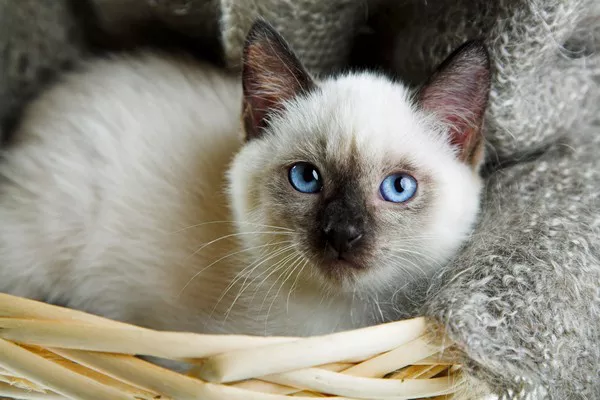Welcoming a litter of kittens into your home is a joyous occasion, but it also comes with the responsibility of ensuring the little ones receive the proper nutrition for their growth and development. At five weeks old, kittens are at a crucial stage where they are transitioning from solely relying on their mother’s milk to exploring a wider range of foods. In this comprehensive guide, we will delve into the nutritional needs of 5-week-old kittens, exploring what they should eat to thrive during this pivotal stage of their early lives.
Understanding the Developmental Stage:
At five weeks, kittens are transitioning from dependence on their mother’s milk to incorporating solid foods into their diet. This period is marked by significant developmental milestones, including the emergence of baby teeth and increased mobility. While mother’s milk remains essential, introducing a variety of nutritious foods becomes crucial to support their growth.
Mother’s Milk: The mother’s milk is still a primary source of nutrition for 5-week-old kittens. It provides essential antibodies, nutrients, and hydration crucial for their overall health.
Introduction of Solid Foods: At this stage, kittens begin to show interest in solid foods. It’s time to gradually introduce kitten-friendly wet food and a kitten milk replacer to support their nutritional needs.
Choosing the Right Kitten Food:
Kitten Milk Replacer (KMR): A high-quality kitten milk replacer serves as a substitute for mother’s milk. It is formulated to provide the necessary nutrients, including proteins, fats, and vitamins, to support healthy growth.
Wet Kitten Food: Selecting a wet kitten food with a smooth texture is essential. Opt for options labeled specifically for kittens, as they are designed to meet the unique dietary requirements of growing felines.
Gradual Transition: Start by mixing a small amount of wet food with kitten milk replacer to create a smooth consistency. Gradually decrease the amount of milk replacer as the kittens become more accustomed to the texture of wet food.
Feeding Schedule and Portions:
Frequent Feedings: At five weeks, kittens benefit from frequent feedings. Aim for at least four to five small meals per day to ensure they receive an adequate amount of nutrition.
Monitoring Appetite: Pay attention to the kittens’ appetite and adjust the portions accordingly. Healthy kittens will display enthusiasm for feeding, and their weight gain can serve as a helpful indicator of their overall well-being.
Hydration is Key: Alongside solid foods, ensure the kittens have access to fresh water. While they may obtain some hydration from wet food, having water available promotes overall hydration.
Transitioning to Solid Foods:
Texture Considerations: Begin with a smooth-textured wet kitten food to ease the transition. As the kittens adapt, gradually introduce wet foods with varied textures to encourage chewing and jaw strength development.
Mixing with Kitten Milk Replacer: To make the transition smoother, initially mix the wet food with kitten milk replacer. This not only maintains some familiarity but also ensures they receive the essential nutrients from the milk replacer.
Observing Chewing Behavior: As the kittens explore solid foods, observe their chewing behavior. The emergence of baby teeth means they are developing the ability to chew, a crucial skill for transitioning to a solid food diet.
Nutritional Components to Consider:
Protein: Protein is a fundamental component of a kitten’s diet, supporting muscle development. Choose kitten foods with high-quality protein sources, such as poultry or fish.
Fat: Healthy fats are essential for energy and the development of a kitten’s nervous system. Look for kitten foods that include essential fatty acids like DHA (docosahexaenoic acid).
Vitamins and Minerals: Ensure the chosen kitten food is fortified with essential vitamins and minerals, including calcium for bone development and vitamin A for vision health.
Avoiding Harmful Foods: Steer clear of feeding kittens human food, especially those that are toxic to cats, such as onions, garlic, chocolate, and certain artificial sweeteners.
Monitoring Health and Growth:
Regular Vet Checkups: Schedule regular veterinary checkups to monitor the health and growth of the kittens. Your veterinarian can provide guidance on nutrition, address any concerns, and ensure the kittens receive necessary vaccinations.
Weight Monitoring: Keep track of the kittens’ weight to ensure they are growing at a healthy rate. Sudden weight loss or lack of weight gain may indicate potential health issues.
Social Interaction: Mealtime also serves as an opportunity for social interaction. Spend time with the kittens during feedings, fostering a positive and bonding experience.
See Also: Feeding a 6-Month-Old Kitten – All You Need To Know
Conclusion:
Navigating the nutritional needs of 5-week-old kittens involves a thoughtful approach that balances the continuation of mother’s milk with the gradual introduction of solid foods. By selecting high-quality kitten milk replacer and wet food, establishing a feeding schedule, monitoring their appetite, and incorporating essential nutrients into their diet, you contribute to their overall well-being during this critical developmental stage. As these adorable furballs explore the world of solid foods, your care and attention play a vital role in setting the foundation for a healthy and happy life.



























